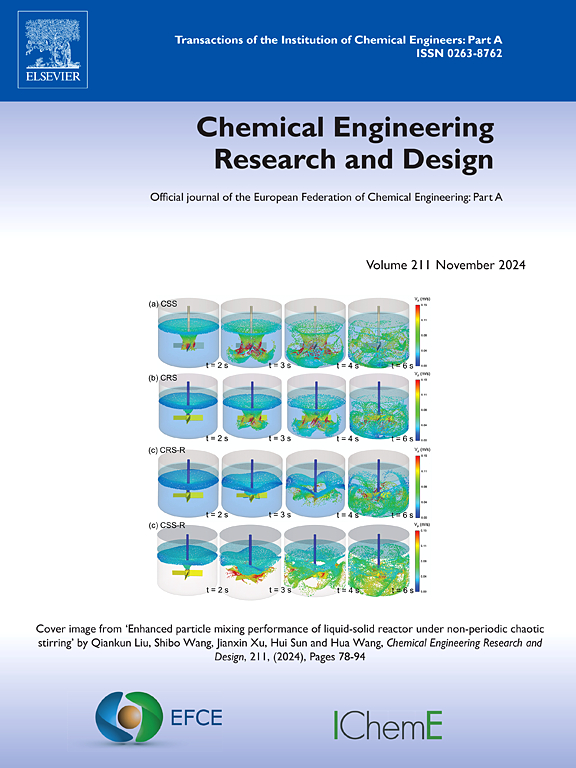Experimental study of the effect of droplet motion velocity on the capture capacity of dust with different characteristics
IF 3.7
3区 工程技术
Q2 ENGINEERING, CHEMICAL
引用次数: 0
Abstract
In coal mine dust control, the efficiency of pneumatic spray technology is limited due to the unclear removal efficiency of different types of droplets on different types of dust, and the unclear dust fog coupling mechanism. This research systematically explores the characteristics of the droplets of the internally mixed pneumatic atomization nozzle and its interaction with the dust through theoretical analysis and experiment. Laser particle size analyzer and particle image velocimeter were used to measure the particle size and velocity field distribution of fog droplets. A gas dust liquid three-phase coupling experimental platform was constructed to capture fog films with specific properties of fog droplet groups for dust fog coupling experiments. The response surface methodology was used to analyze the dust fog coupling effect under different operating conditions. The experimental results show that there is a significant temporal and spatial difference between the droplet velocity and the airflow velocity. The velocity of the aerosol flow field is negatively correlated with the spray distance, and positively correlated with the aerodynamic pressure. The attenuation of the airflow velocity is far greater than that of the droplet. Droplet size is negatively correlated with aerodynamic pressure, and positively correlated with water flow and spray distance. In the coupling effect of dust and mist, dust particles with particle sizes of 0–2.5 μm and 5–10 μm are dominated by droplet velocity, while dust particles with particle sizes of 2.5–5 μm are significantly affected by their own velocity. When the droplet velocity reaches 18–23 m/s, the fog film has a good effect on capturing respiratory dust at different velocities, and the dust reduction efficiency reaches a peak of 86.13 %. The momentum ratio and kinetic energy ratio of fog droplets to dust have a significant nonlinear effect on the removal of 5–50 μm dust from airborne airflow, with the removal efficiency of 10–50 μm dust showing a unimodal distribution as the momentum ratio and kinetic energy ratio increase. The results of this study provide data and theoretical support for determining the optimal dust mist coupling matching relationship between different types of droplets and dust under different lateral airflow velocities, and for efficient prevention and control of respiratory dust in coal mines.
求助全文
约1分钟内获得全文
求助全文
来源期刊

Chemical Engineering Research & Design
工程技术-工程:化工
CiteScore
6.10
自引率
7.70%
发文量
623
审稿时长
42 days
期刊介绍:
ChERD aims to be the principal international journal for publication of high quality, original papers in chemical engineering.
Papers showing how research results can be used in chemical engineering design, and accounts of experimental or theoretical research work bringing new perspectives to established principles, highlighting unsolved problems or indicating directions for future research, are particularly welcome. Contributions that deal with new developments in plant or processes and that can be given quantitative expression are encouraged. The journal is especially interested in papers that extend the boundaries of traditional chemical engineering.
 求助内容:
求助内容: 应助结果提醒方式:
应助结果提醒方式:


